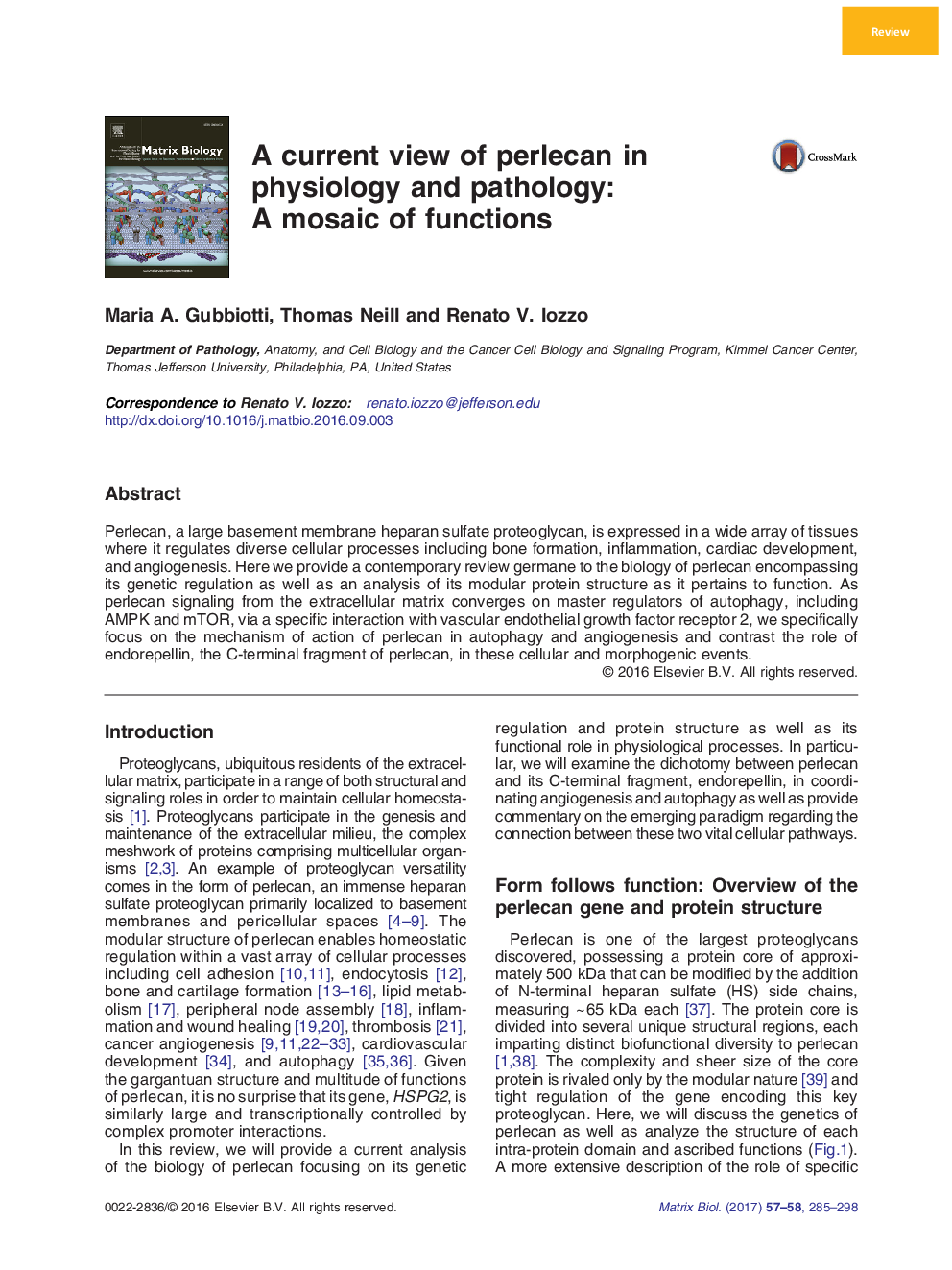| Article ID | Journal | Published Year | Pages | File Type |
|---|---|---|---|---|
| 5528535 | Matrix Biology | 2017 | 14 Pages |
â¢A modern view of the biological properties of perlecan, an archetypal basement membrane proteoglycanâ¢The genomic organization of perlecan translates into a large, modular proteoglycan regulating numerous cellular pathwaysâ¢Mutations in the perlecan gene across multiple organisms result in diverse phenotypesâ¢Perlecan and its C-terminal fragment, endorepellin, display antagonistic roles in angiogenesis and autophagy
Perlecan, a large basement membrane heparan sulfate proteoglycan, is expressed in a wide array of tissues where it regulates diverse cellular processes including bone formation, inflammation, cardiac development, and angiogenesis. Here we provide a contemporary review germane to the biology of perlecan encompassing its genetic regulation as well as an analysis of its modular protein structure as it pertains to function. As perlecan signaling from the extracellular matrix converges on master regulators of autophagy, including AMPK and mTOR, via a specific interaction with vascular endothelial growth factor receptor 2, we specifically focus on the mechanism of action of perlecan in autophagy and angiogenesis and contrast the role of endorepellin, the C-terminal fragment of perlecan, in these cellular and morphogenic events.
